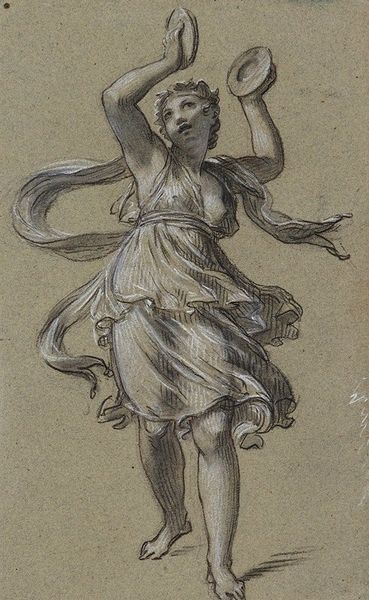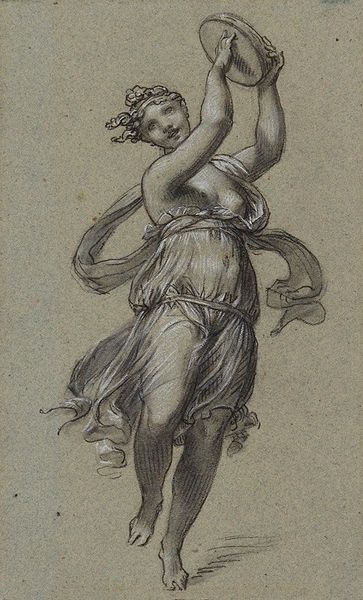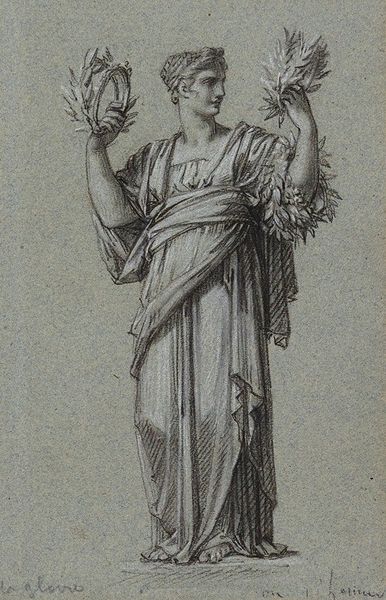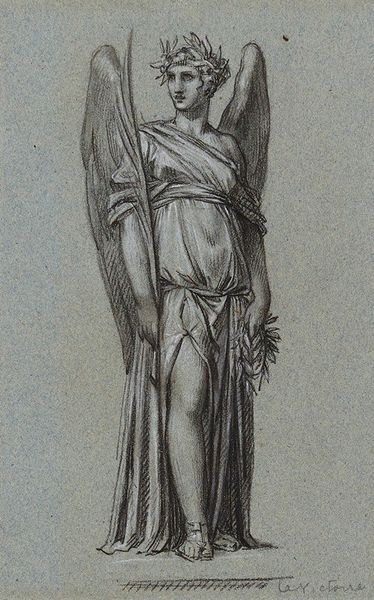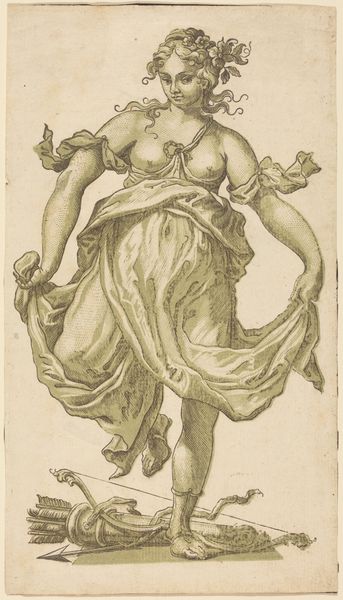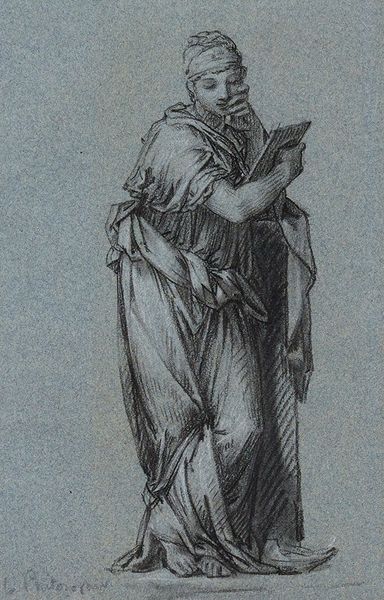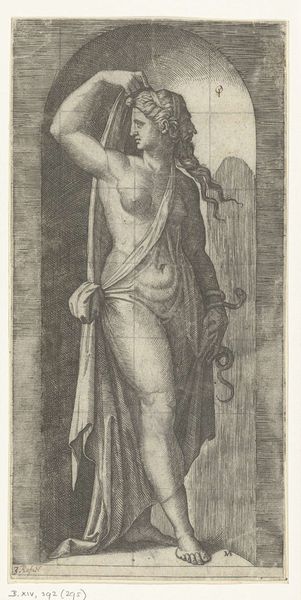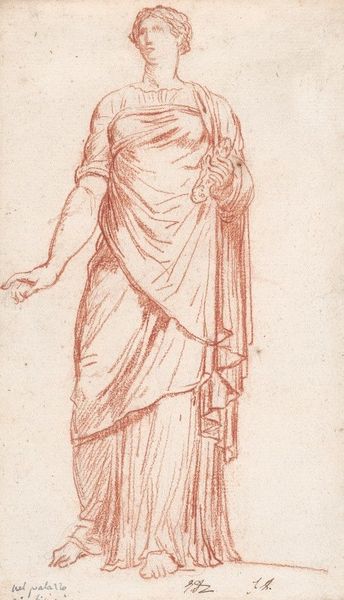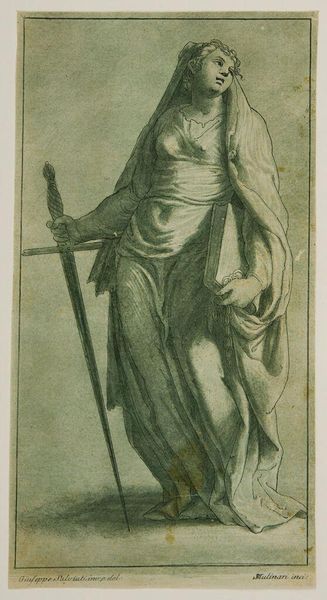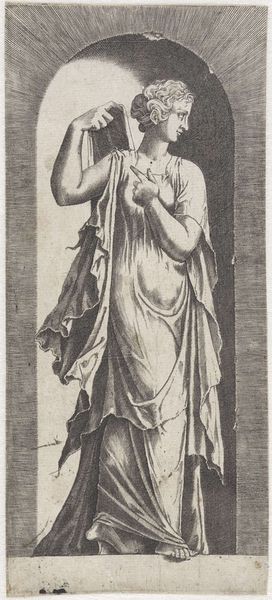
drawing, pencil
#
portrait
#
drawing
#
neoclacissism
#
figuration
#
pencil drawing
#
coloured pencil
#
detailed observational sketch
#
pencil
#
portrait drawing
Copyright: Public Domain: Artvee
Curator: Pierre-Paul Prud'hon's drawing, "Danseuse au triangle", crafted circa 1800, is a striking example of Neoclassical artistry, rendered delicately in pencil. Editor: Oh, she's a vision! Ethereal and mischievous, like she's about to play a prank with that triangle, not music. A touch wicked, maybe? Curator: Note the artist's precise attention to line and form, a hallmark of the Neoclassical aesthetic. The figure is idealized, yet rendered with a certain anatomical fidelity that invites close inspection. The soft shading is rather interesting. Editor: Yes, that shading gives her this ghostly glow, like she's lit from within. The folds in her gown almost ripple off the page—it's pure poetry, really. But why a triangle? Is she the muse of geometry gone wild? Curator: Indeed. The triangle could symbolize harmony, or even reference philosophical concepts relating to thirds or triads popular at the time. Beyond subject, look at the economy of the piece itself. Prud’hon reduces the form to its most essential expression, echoing themes from the Enlightenment period. Editor: Maybe it's simpler. Maybe she just loves triangles! There’s this joyous abandon to her pose, a feeling that rules don’t apply. Like a summer day where anything could happen. Or perhaps it has to do with the material's simplicity and immediacy: a pencil drawing has very little artifice; what you see is what you get, like a confession. Curator: It is difficult to definitely assert meaning from the work alone, yet the thematic tension between freedom and structure that you describe certainly vibrates here. Editor: I still think she is one wicked muse... she seems to dance out of reach of my understanding and perhaps that’s the magic of it. A bit naughty but wonderful. Curator: An evocative and resonant response to a fine pencil study.
Comments
No comments
Be the first to comment and join the conversation on the ultimate creative platform.
